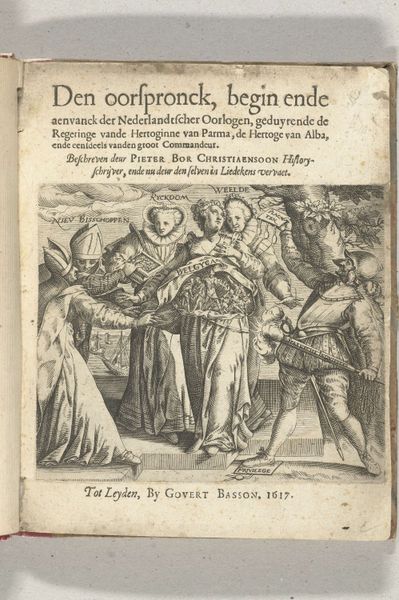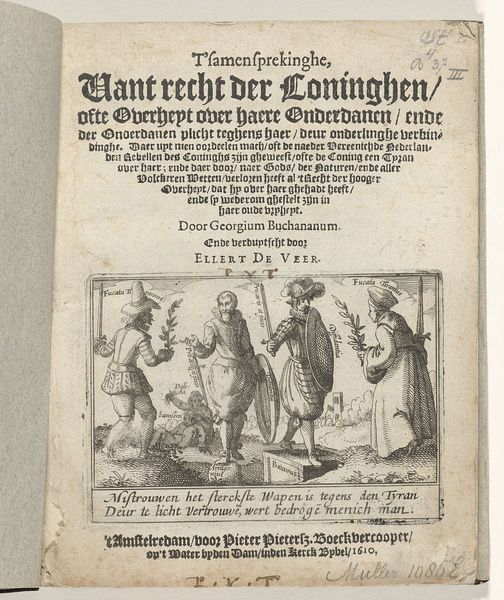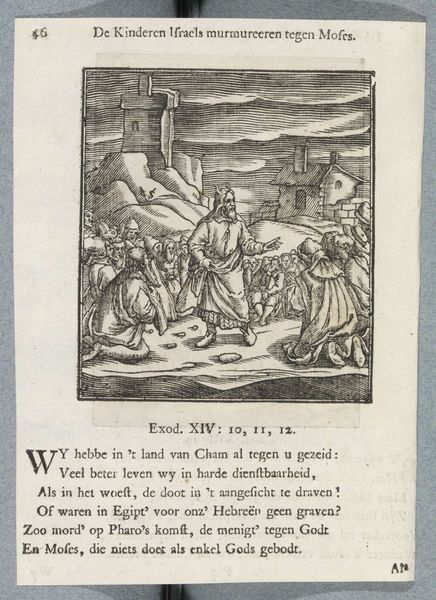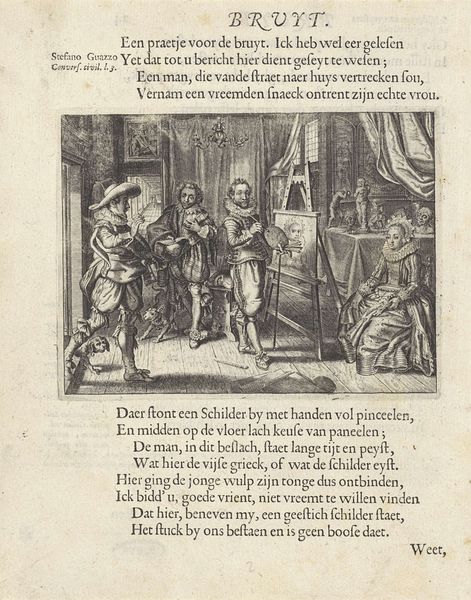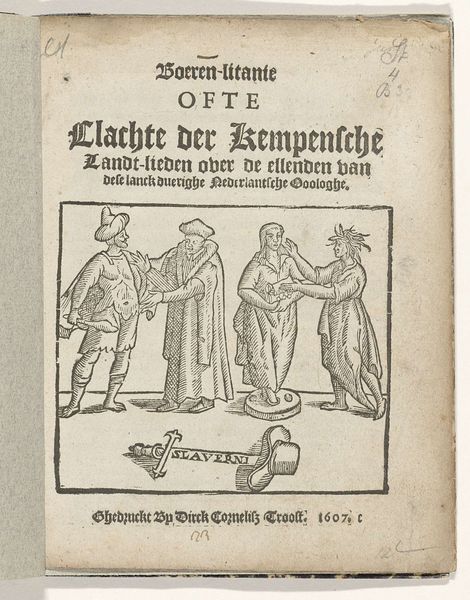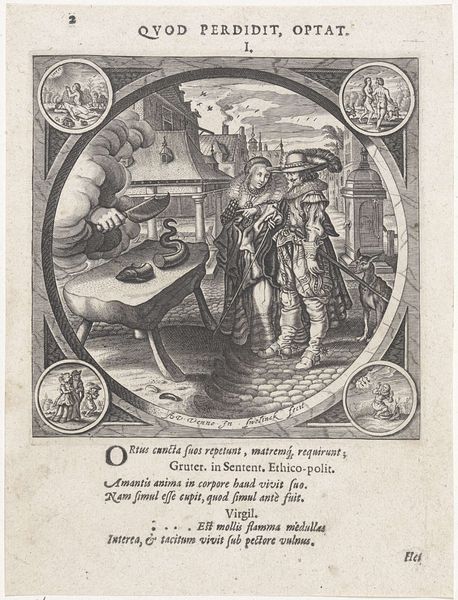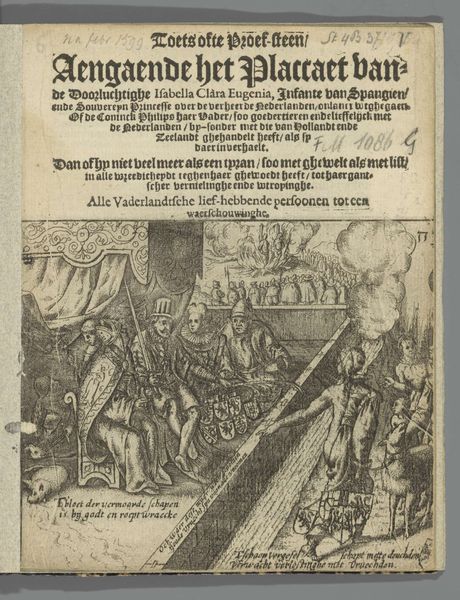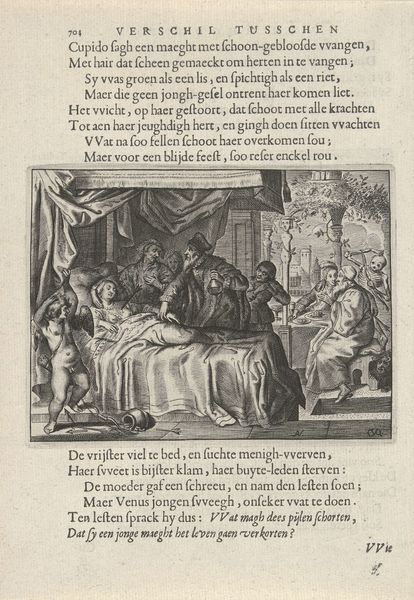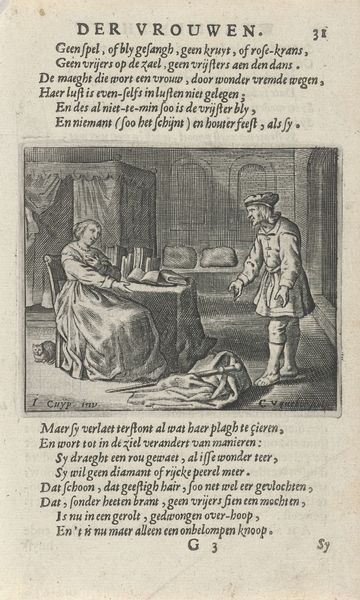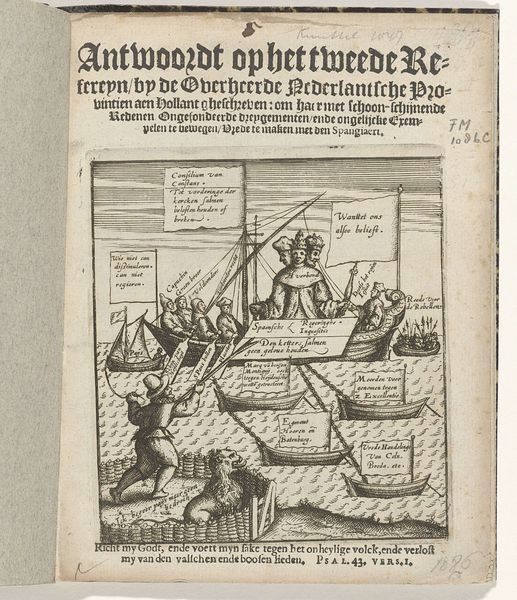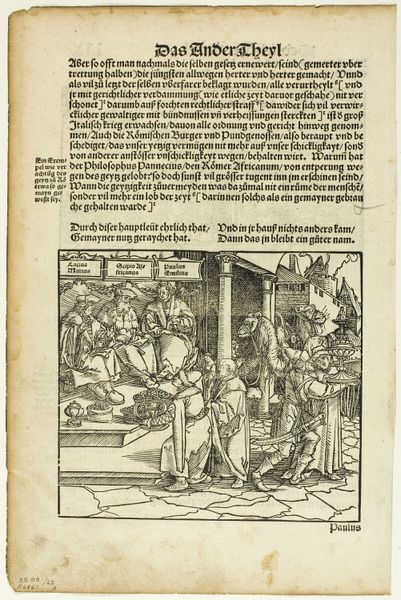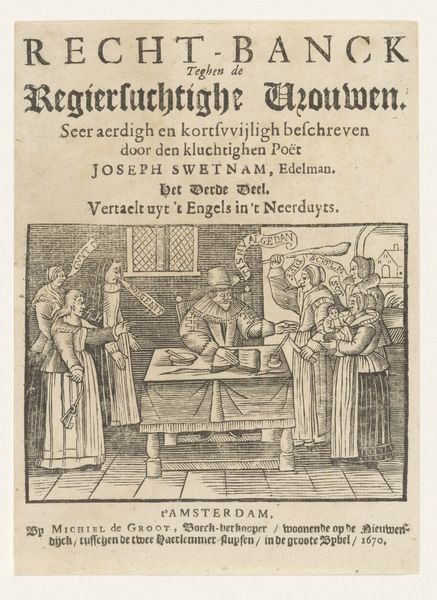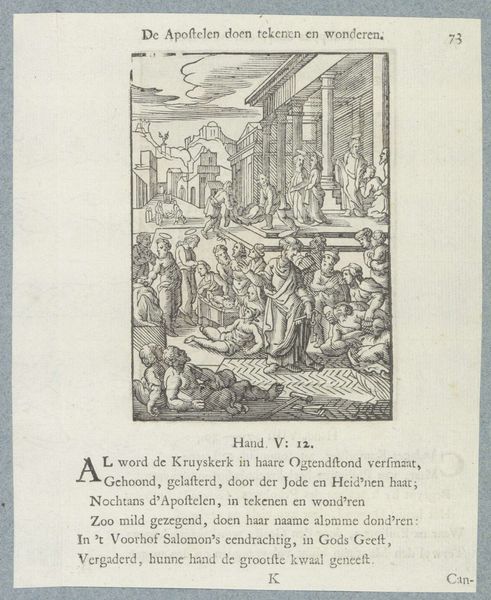
print, paper, ink, engraving
#
medieval
#
narrative-art
# print
#
figuration
#
paper
#
11_renaissance
#
ink
#
line
#
history-painting
#
engraving
Dimensions: height 194 mm, width 150 mm
Copyright: Rijks Museum: Open Domain
Curator: This is the title page to a pamphlet from 1620, "Rendevous Knapsack," printed in Leiden by Frans Frantz. Immediately striking, isn't it? Editor: Absolutely. There's such frenetic energy here, conveyed entirely through line. The figures are almost tumbling over each other in the foreground. A real chaos captured. Curator: And a carefully constructed chaos, I think. Look at how the artist employs emblematic imagery - the lion, the dog, even the cauldron bubbling away. These aren't just random elements; they're symbols ripe with meaning in the cultural imagination of the time. Editor: Right. But think about the practicalities. An engraving like this would have been reproduced many times over, each print requiring meticulous work with the burin to create those fine lines. The dissemination of ideas, made tangible through laborious processes. It would be interesting to learn about the print run and distribution networks. Curator: The title itself, "Rendevous Knapsack", is intriguing. A knapsack suggests a repository of collected experiences, a gathering point. Given the turbulent times – the early years of the Thirty Years' War – perhaps it's a metaphor for the burdens and anxieties accumulating during that period. Editor: Or a comment on how printed images, themselves small portable things, become a form of currency, part of a larger material exchange of ideas. The ink itself, likely a combination of soot and oil, carries its own history too. It speaks of what was at hand to produce this object. Curator: It speaks to the enduring human need to make sense of upheaval. This print encapsulates the fear and uncertainty of a world turned upside down, all through easily readable symbols of morality, religion and folklore. Editor: Seeing the density of work packed into a small pamphlet like this drives home how the making process served a cultural function. To me, it becomes a meditation on human labor. Curator: Yes. This is more than just an illustration; it’s a small window into a very specific historical and mental landscape. Editor: Precisely. A landscape brought to us through the physical, historical reality of ink on paper, disseminated among an active populace.
Comments
No comments
Be the first to comment and join the conversation on the ultimate creative platform.
